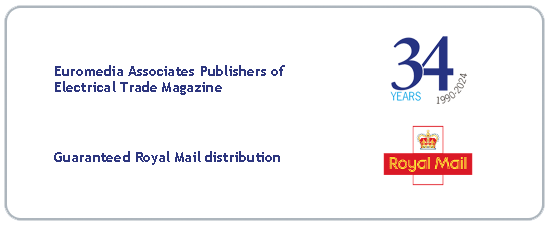Sales of electric cars and hybrid vehicles are likely to grow further in the coming years following the UK government’s recently-announced plan to end the sale of new combustion engine-powered cars and vans by 2035. The automotive printed circuit board (PCB) market is already growing fast, thanks in part to reduced hardware costs and consumer expectations, but in the coming years we can expect to see an increasing quantity of electronics being fitted into both new and second hand vehicles: whether petrol, diesel or electric-based. Consequently, the global automotive PCB market is expected to reach more than $14 billion during 2018-2024 according to a new report available from ResearchAndMarkets.com.
We would also expect to see this market continuing to grow far into the future, for a variety of reasons: According to a report from MarketsandMarkets.com, the global in-vehicle infotainment market is projected to reach US$54.8 billion by 2027 from an estimated USD 24.3 billion in 2019, at a CAGR of 10.7%. Features like rear-facing cameras and automated parking that were once luxury items are rapidly becoming standard. Markets for applications from vehicle lighting and safety to powertrain components, engine control and interiors are all growing rapidly – and all this growth will drive further expansion in automotive PCBs.
Consumer expectations of the reliability and safety of these electronic components are increasing all the time. In part, this is driven by manufacturers increasingly looking to stand out from the competition in terms of the reliability and safety of their vehicles, as exemplified by the length of the warranties they are prepared to offer. The impending arrival of autonomous vehicles on our streets will merely serve to raise the reliability and safety stakes even further, and by association, the need for more reliable PCBs.
We are already seeing stringent regulatory standards in place governing automotive PCBs: from IPC-6011 which defines the generic performance specifications for PCBs to AEC Q100, which delivers failure test qualifications for integrated circuits. Adding to the pressure, product recalls in the automotive industry are very expensive, which further pushes the need to ensure PCB vendors deliver maximum performance and reliability. Additionally, the need to protect the PCB rises with the number of PCBs on each car.
Traditional vehicles have incorporated PCBs for some time, often in peripheral applications such as entertainment systems and central locking. Since these PCBs were few in number and not vital to the proper functioning of the vehicle, their reliability and lifespan was not necessarily a priority. Modern vehicles, however, are designed with increasing numbers of electronic components which are vital to their normal day-to-day function. As more electronic components become integral to vehicles, there is an ever-increasing need to improve the reliability of individual components to safeguard the functionality of the system as a whole. In essence there is a need to match the reliability of more traditional, less electronics-dependent vehicles, which have fewer points of failure, by protecting the PCBs from damage. In pursuing this aim, manufacturers are effectively putting an ever-higher premium on the integrity and lifespan of PCBs. 
Taken together, all this is enough to make the need to protect these boards an imperative for any automotive manufacturer. Yet, the trend to miniaturisation of components makes achieving this protection ever more challenging. In light of these trends, it is becoming ever more important that manufacturers integrate the latest water protection methods to protect these components and help ensure longevity.
Unfortunately, there are a range of issues and weaknesses with current water protection methods. The most commonly used are conformal coatings, which have been employed for around 40 years. Their main weakness is their inability to protect the entire PCB. Connectors cannot be protected as the coating is too hard and thick, meaning that any coated connector would be unable to mate with its counterpart. Spray coatings, brush coatings and CVD (chemical vapour deposition) coatings also age poorly, cracking and delaminating over time, leading to reduced protection levels.
Gaskets and sealed enclosures are commonplace modes of protection. However, they tend to deteriorate badly through vibration and natural aging processes. Cracks often appear as a result and let in water and humidity, which leads in turn to board failures.
The age of miniaturisation
These traditional approaches to water protection also struggle to manage miniaturised boards. This is an especially big problem given the trends we see in today’s marketplace. More components and functions being added into cars inevitably leads to a reduction in the space available for each circuit board, and therefore also to a focus on miniaturisation. This often makes protecting the boards more difficult.
It is a lot easier to seal a big thick plastic box, than a thin small one. Moreover, the more densely packed the PCBs inside a console or engine, the less space there is for physical seals.
Finally, more PCBs mean more connectors for communication. As these cannot be protected by traditional conformal coatings, they are often poorly protected, or need mechanical seals built into the connectors themselves.
Finding a Way Forward
Today we see nano coatings emerging as the ideal solution to these kinds of challenges. Typically, they are ultra-thin. By applying them instead of thicker coatings, manufacturers avoid the problem of underfill behind the board. They can protect every part of the PCB including connectors and do not crack and delaminate with age. As it is a plasma process the coating is chemically bonded to the surface of the PCB, meaning that it becomes part of the product and will last for the lifetime of the board.
From the miniaturisation perspective, nano coatings don’t have the same challenges with space limitations that traditional sealants have. Today, the use of nano coatings is growing across the electronics industry as an effective way to protect PCBs. Given the increasing integration of electronics with vehicles and continuing technical innovation in the field of nano coatings, it follows that the use of nano coatings in the automotive industry will only increase.”





